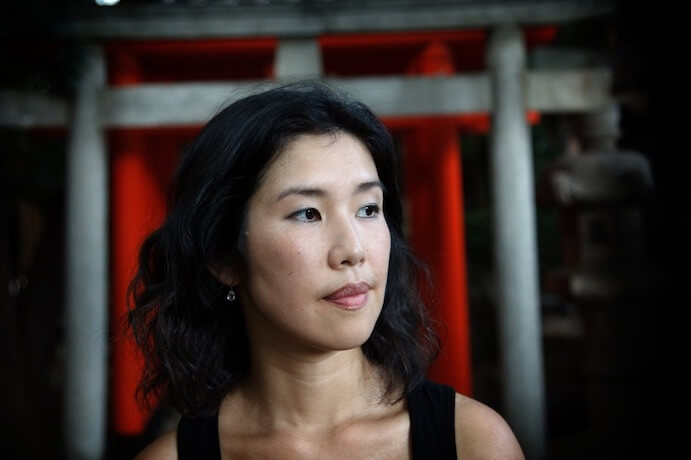In her solo debut album Of Being (New Focus Recordings), pianist Ning Yu presents three new works related thematically through the experience of existence on planet Earth. Ning is well-regarded as a piano soloist and as a member of chamber music ensembles Yarn/Wire and counter)induction, giving numerous world premieres as both a soloist and chamber musician over the past fifteen years. Of Being fortifies a sonic comprehension of what it means to thrive and how it feels to perish, simultaneously presenting a celebration of human artistic and scientific achievement via virtuoso piano performance while examining the death and decay our species has brought to our home. Released on May 8, 2020, this album provides a respite to our collective art-starved culture of Covid-19 pandemic life, providing a unique comprehension to these compositions that examine temporality and existence. Three premiere recordings by composers Wang Lu, Misato Mochizuki, and Emily Praetorious combine beautifully for an album delivered at the perfect time for humanity on the brink.

Ning Yu–Photo courtesy ningyupiano.com
Wang Lu’s Rates of Extinction (2016) is a multi-movement work that presents five relatively short unnamed movements, each with its own unique character, unified aesthetically through various multi-layered minimalist polyrhythms interjected with motivic fragments in perpetual orbit. As the title suggests, this work grieves the loss of species that went extinct around the year 2015, utilizing the pace of each species’ heart rate as thematic material for the work. The vastly open and dark first movement explores the extreme ranges of the piano, each heartbeat occupying its own registral space creating layers of sound that spin and orbit each other. The insistent motives of the more urgent second movement invoke the interrelatedness of species. In the slow third movement, sounds overlap creating harmony that laments this tremendous loss. The fourth movement begins with a persistent Morse Code motive, interrupted by jazz comping gestures and melodic fragments unlike anything previously heard in the first three movements. This movement doesn’t lay down and accept a doomed fate, it fights until the last breath, dissonance embodied through struggle, invoking an anger in an empathetic listener, sadness in a compassionate one. The fifth and final movement of this work returns to a peaceful, calm aesthetic. It is both accepting and confused, sad and powerless.
Moebius Ring (2003) by Misato Mochizuki provides relief from the depressing theme and sounds of Wang’s composition. Inspired by science and human intellect, this work conceptually renews a sense of hope that human ingenuity can rise above the challenges we face. Drawing inspiration from the infinity concept of a Moebius Ring, a never-ending loop that has neither a top nor bottom, up nor down, this composition explores how timelessness can be paradoxically both freeing and constricting though series of variations that the pianist battles through and against. The dense spectra of the lowest notes on the piano are fully explored and allowed to resonate though various sustain pedal uses and depressed keys. The variations explore a wide array of stylistic ideas. I was particularly enamored with a few of the variations that include a pointillistic section where Dave Brubeck meets Milton Babbitt, a Grisey-esque spectral explosion, an engine that revs up and shifts gears, jazz through the lens of Boulez, and a calming and open-structure harmonic section. This work is ever-evolving, through-composed, and formally-complex. Upon a first listening, I thought this work didn’t know how to end, but upon additional pondering of the subject matter, realized this makes perfect sense.

Misato Mochizuki–Photo by Jérémie Souteyrat
The final work on the album is multi-movement title work Of Being (2019) by Emily Praetorius. This composition “navigates a space between suspended time and flowing time,” and its title is derived from a concept explored in Virginia Woolf’s essay “A Sketch of the Past.” Of Being inspires an introspection into one’s own awareness of self and the complexities of how our existence is partially defined by our relationships, as each note does not exist in isolation. As the composition progresses, peaceful gestures meet conflict, showcasing the inevitability of conflict when overpopulated. Ning’s execution of complicated gestures sounds effortless and technically profound. The haunting resonances of the second movement, created by scraping the interior large-gauge strings, seemingly ring for an eternity. Like the soundtrack to a horror movie, the repeated scrapings of the piano string at the end of this movement are like a dying scream of a damned soul. This fascinating composition ends with repeated droning on a single note, representing the singular experience, a philosophical idea that we cannot truly know that anything exists outside of our minds.
One benefit of listening to a recording by the brilliant Ning Yu is how easy it can be to focus entirely on the ideas present in each composition, one almost forgets that a human is performing these amazing feats. The effortless sounding performance presents a clarity and focus that cannot be understated. Ning presents complex new works impeccably and expressively on an album that gives some hope in the complex year of 2020, an outstanding example of art being both beautiful and politic. Of Being deserves a listen by any fan of contemporary music, and it’ll leave you simultaneously hopeful and hopeless, lost in the deeper thoughts of your own subconscious. This album is a brilliant addition to the repertoire of the solo piano.






















